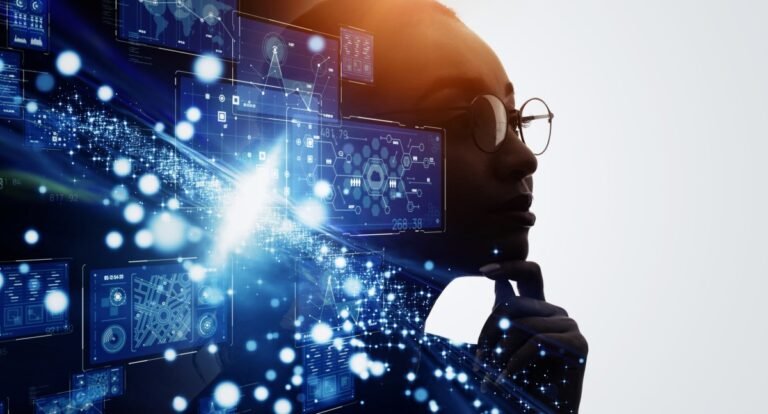
A subsequent update has made them more palatable and truer to life, and Apple says it’s continuing to work on the 3D captures.
The company on Tuesday debuted “spatial” Personas for Vision Pro headsets running visionOS 1.1 or later.
From there, users can select the spatial persona option, which utilizes the Vision Pro’s on-board sensors to place the Persona in the room with them.
Spatial audio, meanwhile, further places them at a specific point in space relative to the Vision Pro user.
Vision Pro users will continue doing business in the uncanny valley for the foreseeable future.

Amazon invested a further $2.75 billion in growing AI power Anthropic on Wednesday, following through on the option it left open last September.
The $1.25 billion it invested at the time must be producing results, or perhaps they’ve realized that there are no other horses available to back.
Lacking the capability to develop adequate models on their own for whatever reason, companies like Amazon and Microsoft have had to act vicariously through others, primarily OpenAI and Anthropic.
Right now the AI world is a bit like a roulette table, with OpenAI and Anthropic representing black and red.
We know Anthropic has a plan, and this year we’ll find out what Amazon, Apple, Microsoft and other multinational interests think they can do to monetize this supposedly revolutionary technology.

Part of the shift to AI comes internally by building, some come via acquisitions and some come from partnering widely, says VP of corporate business development Philip Kirk.
Lara Greden, an analyst at IDC who covers ServiceNow, says going beyond building is a big part of every company’s strategy when it comes to AI.
“Like other major waves of technology innovation, breakthrough capabilities in generative AI are coming through entities that have laser focused on the tech itself, in other words: startups.
“ServiceNow’s focus has been on integrating generative AI to improve entire workflows, not just single processes or tasks.
They also play an important role in guiding customers with best practices around data governance and control.”The Washington release is available starting on Wednesday for all ServiceNow customers.

AI is “not open in any sense,” the battle over encryption is far from won, and Signal’s principled (and uncompromising) approach may complicate interoperability efforts, warned the company’s president, Meredith Whittaker.
“The overall theme I’m seeing is a deep desire for accountability in tech, which we saw sort of animated mid-2010s.
That, then, has been weaponized; and I think we’re seeing surveillance wine in accountability bottles,” she said.
It’s a form of, again, parochial, magical thinking here,” said Whittaker.
But then Google published a couple of days later, like Microsoft is actually the monopoly because it has the OpenAI and sort of the Azure monopoly, right?

In May 2019, Ultrahaptics and Leap Motion became Ultraleap (not to be confused with Magic Leap, which operates in the same space).
“I think it’s a long-term vision for XR,” Carter said of the deal.
Founded by a pair of University of Bristol students three years after Leap Motion, Ultrahaptics harnesses ultrasound waves to create tactile feedback.
Much like the earlier Leap Motion product, it would be possible to mount a device to the front of the visor, but directionality is important.
The Leap Motion tech determines your hands’ orientation in space, while haptics provide tactile feedback when you come into contact with the virtual object.

If you hurry, you can get $40,000 off a 2023 Toyota Mirai, a fuel-cell vehicle which retails for $52,000.
Toyota’s discount comes on the heels of Shell’s announcement three weeks ago that it’s closing its hydrogen filling stations in California.
Of those that remain, about a quarter are offline, according to the Hydrogen Fuel Cell Partnership.
So why are Toyota and Honda (and Hyundai and others) still so bullish on hydrogen?
If today’s hydrogen startups succeed, and if they’re able to build enough capacity to satiate industrial and shipping demand, then it might make sense to start selling fuel-cell vehicles to the masses.

Case in point, OpenAI today announced a partnership with Common Sense Media, the nonprofit organization that reviews and ranks the suitability of various media and tech for kids, to collaborate on AI guidelines and education materials for parents, educators and young adults.
As a part of the partnership, OpenAI will work with Common Sense Media to curate “family-friendly” GPTs — chatbot apps powered by OpenAI’s GenAI models — in the GPT Store, OpenAI’s GPT marketplace, based on Common Sense’s rating and evaluation standards, OpenAI CEO Sam Altman says.
Common Sense’s framework aims to produce a “nutrition label” for AI-powered apps, according to Common Sense co-founder and CEO James Steyer, toward shedding light on the contexts in which the apps are used and highlight areas of potential opportunity and harm against a set of “common sense” tenets.
An Impact Research poll commissioned by Common Sense Media late last year found that 58% of students aged 12 to 18 have used ChatGPT compared to 30% of parents of school-aged children.
“Together, Common Sense and OpenAI will work to make sure that AI has a positive impact on all teens and families,” Steyer said in an emailed statement.

GoodOnes is a photography app that helps users select the best 12 photos to make a calendar. The app is in early access mode, and closed a $3.5 million round…











